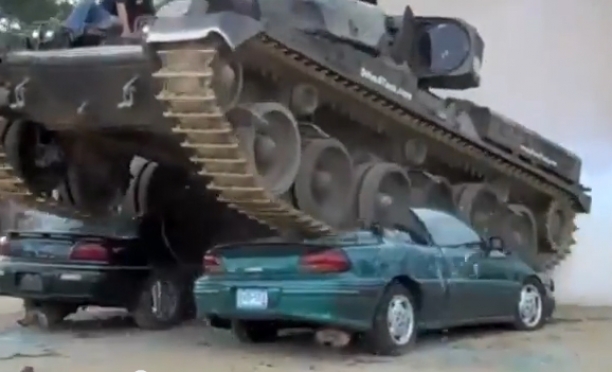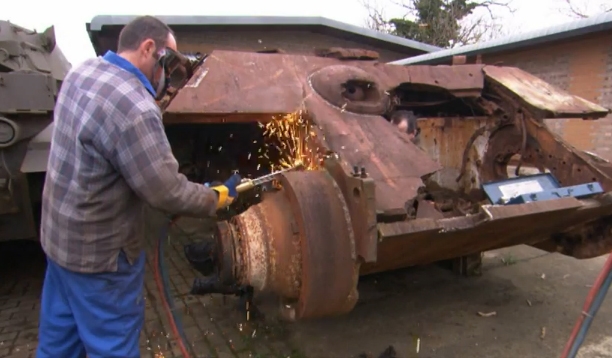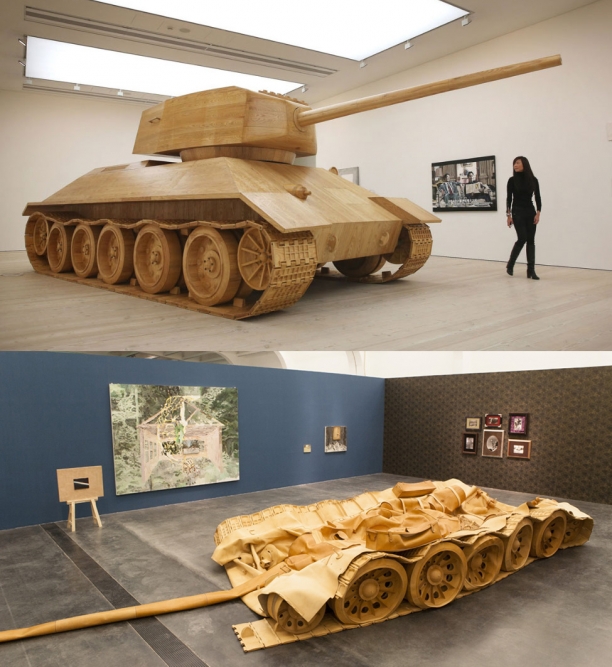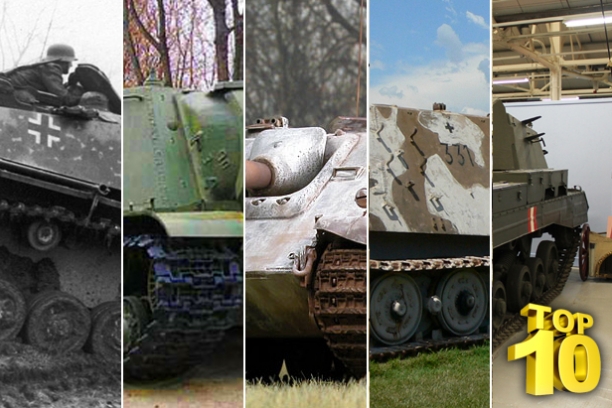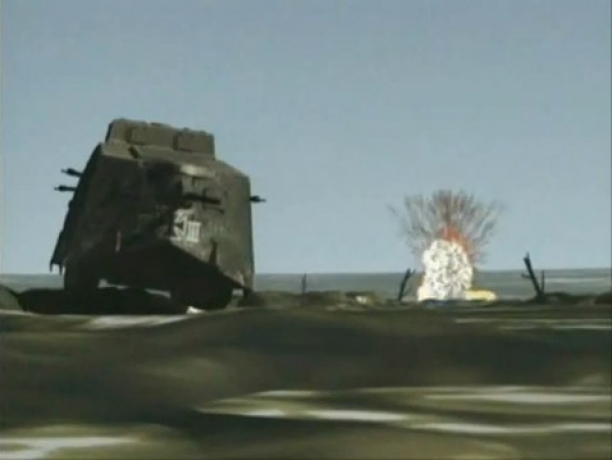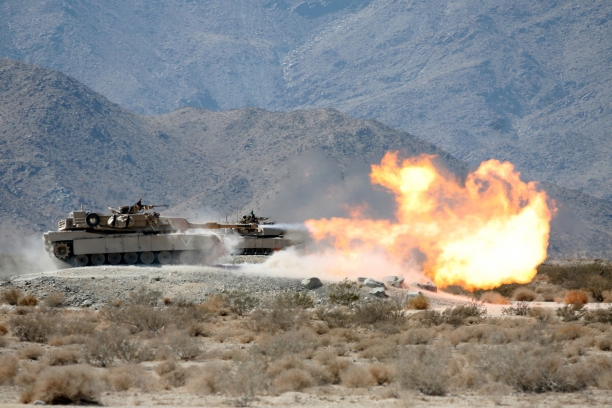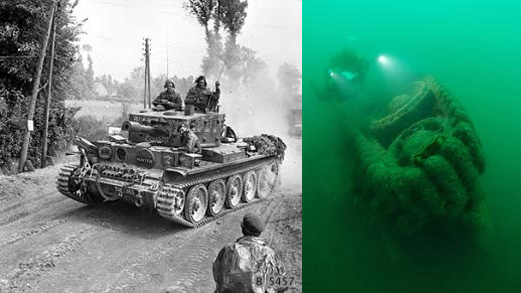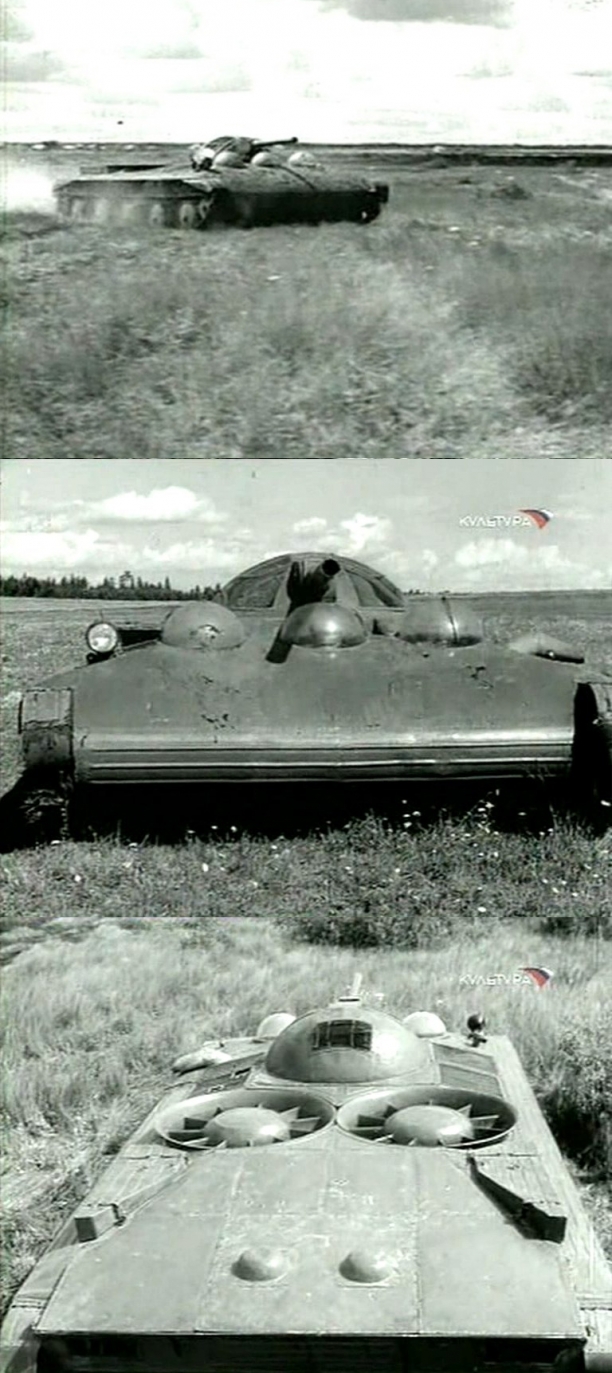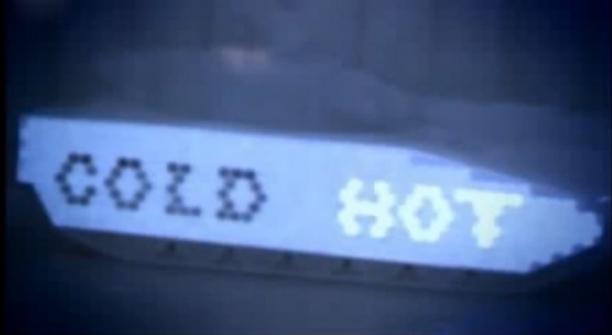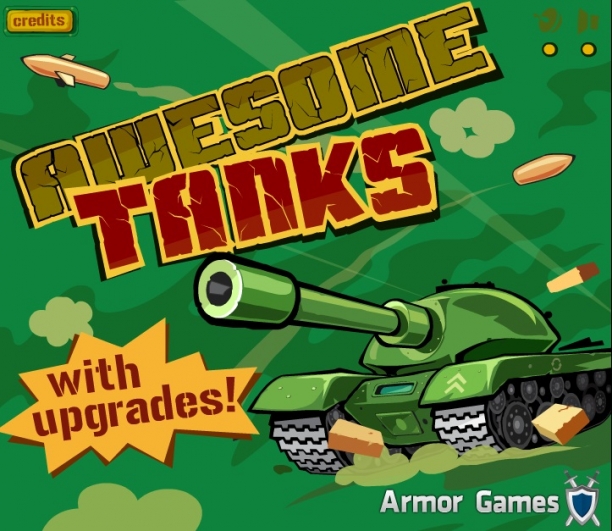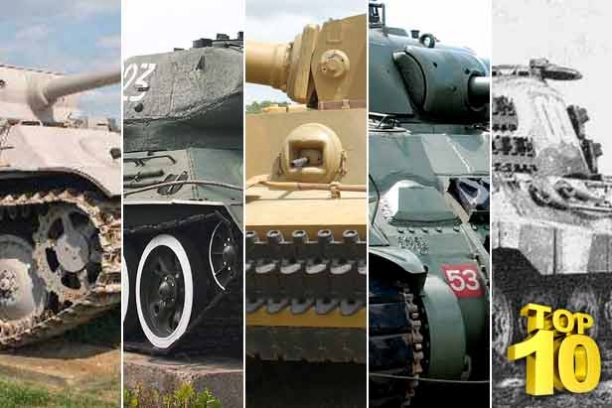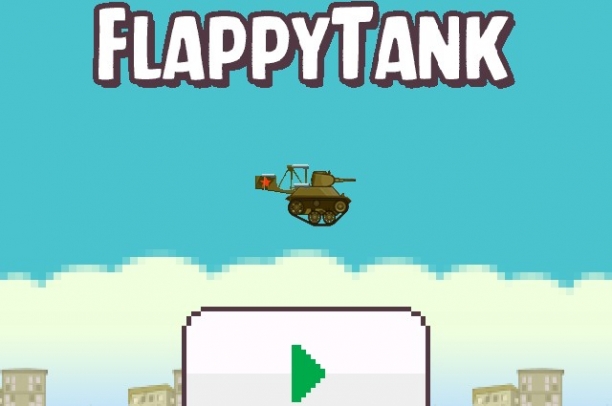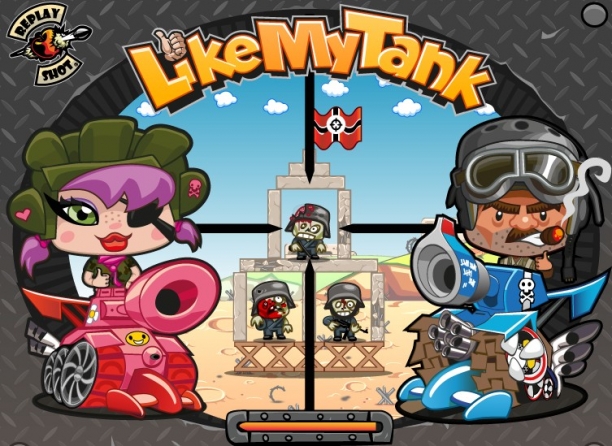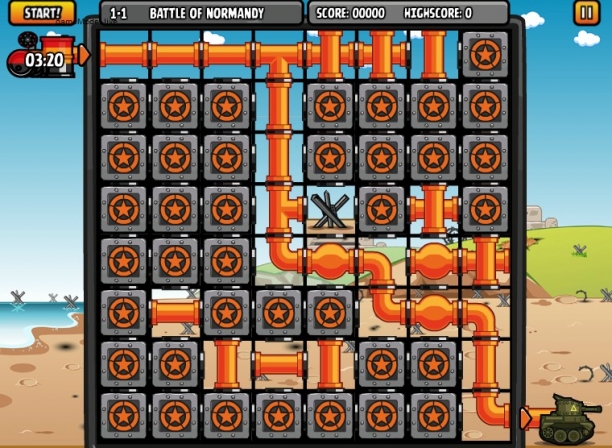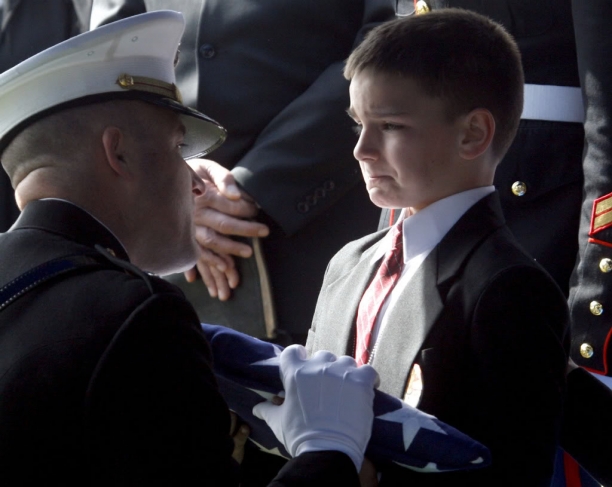Wow, what an amazing tanks crushing cars sequence. What do you think? Please, comment below.
|
Generally, tanks from US military forces are good in tactical and strategic mobility, have spot on accuracy and one of the fastest rate of fire. They are oftentimes the most effective and can destroy the bulk of their enemy within minutes. The defect and weakness of these tanks, however, is the insufficient and inadequate side and rear structure of the armor which is subject to troop harm and loss.
|
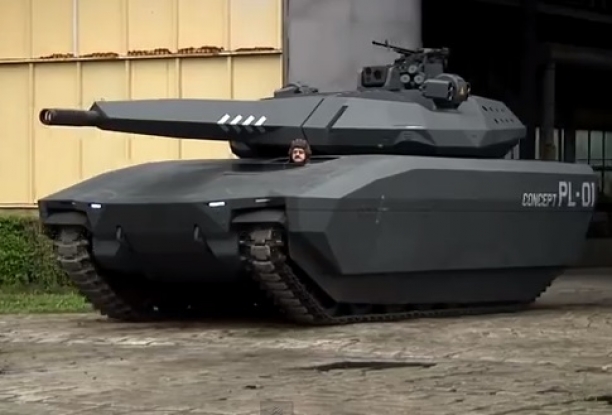
Tank PL-01 idea invented by Polish businesses and a large English company. The tank has a unique look and can be completely changed around to fit the user's preference.
Tank and men
The tank is not a heavy construction that has a goal of fighting other vehicles in combat. The PL-01 lets 3 crew to be seated inside the vehicle, which allows for more armor against outside threats like explosives and mines. It has a new age, ceramic armor that has many different layers.
New hybrid
The tank will use steel or rubber tracks to move along the ground, with a drive that is powered by an engine that is a hybrid. The vehicle can drive at fast speeds wherever it pleases. It can easily go through water as well.
Lots of firing options
The tower has modules, and it allows for a mount that has an auto ammo feed system located on the backside of the tower. It also has a machine gun and a selection of weapons that can be controlled by remote, plus a larger calibre rifle and a grenade launcher.
It is both ready to fight at night and during the day. It lets the drivers observe enemies during the day and night. There will also be an auto detection system for missiles and for partnered forces. Everything will be connected to one system which will be the head behind the guns.
This is one of the most powerful tanks out there. The Polish tank PL-01 will begin being manufactured near 2020.
|
It's normal for our readers to write in and ask us which of the battle tanks is the best that ever existed in the world. In other worlds, of all the modern MBTs, which one of them is the best, and why. In order to figure out such a ranking, we've had to consider accuracy, mobility, firepower, and protection. Of the tanks talked about below, you'll see that all of them are super-powerful, alas they haven't actually gone against each other in a battle. Since there's no battle history, the analysis is all based on the data points that I previously mentioned. All the tanks mentioned actually exist and can be found today in the real world.
These are the best of the best in tanks:
|
Tank Overhaul is a place where hobbyists get together to share their knowledge of technology to put some of the amazing tanks of our time back together again. You can watch both a German and an American tank go from parts to their stunning glory again as they are reconstructed.
They are currently working on putting a Panther tank back together again. It was actually found at the bottom of a river in Poland and it won't be easy for these professionals to put it back together again. By reconstructing the tank, they are able to take a glimpse into history and better understand the events of WWI.
|
Wow. This artist really knows her tanks. Amy Cheung's Hong Kong Eye exhibition of tanks is held in the Saatchi Gallery in London, England. It is opened from Dec. 5, 2012 - Jan 12, 2013 and you can among others this magnificent wooden tank. An amazing amount of detail, isn't it?
|
The T 34 Soviet medium tank was first used in 1940 and had a very large influence on the ways that tanks are designed. It has been talked about as one of the best tanks that was used during the Second World War. It had the best balance as an overall tank, but it wasn't designed to hold the passengers very well, didn't have radios, and performed tactics poorly. That being said, it had guns that made it a fierce adversary for the time. The three inch machine gun was by far the best tank gun at that time. The armor also made it hard to destroy by other tanks. German military officials called it one of the fiercest tanks on the field of battle.
|
Most of the German and Russian weapons that were used to destroy tanks during the Second World War didn't have turrets, but some of the English and American weapons did. Most of the tank destroyers had the same size gun that tanks had, but at a less expensive cost. These tank destroyers did their job well against tanks, but when it came to going up against soldiers on foot they were very ineffective. Below you'll find a list of the top ten tank destroyers in the world. They have been scored based on how well their armor protects them, speed, the power of the main gun, and their experience on the field of battle.
|
Watch how modern computer graphics can reinvent battle between tanks.
The A7V was a huge tank weighing 30 tons and composed of 18 member crew. This tank was not operative and powerful as other tanks during World War I. Due to material deficits only twenty tanks had been finished and built by the final stage of the war. On Apr. 24, 1918 at the Second Battle of Villers-Bretonneux the A7V was involved in the first tank vs. tank battle but no distinct winner was declared.
|
The most awe inspiring and destructive weapon used by the army is the tank. They first started being used in WWI by the British and the French, and since then they have been a menace on the field of battle. All through the twentieth century the tank has been a continuous weapon that has been used by the army to wreak havoc upon enemies far and wide. A the end of WWII over three thousand tanks fought in the Battle of the Bulge, then they took part in the Battle of Dezful which took place between Iraq and Iran, and then in countless other important battles. Today we will take a look at ten of the most amazing tank battles that have happened throughout time.
|
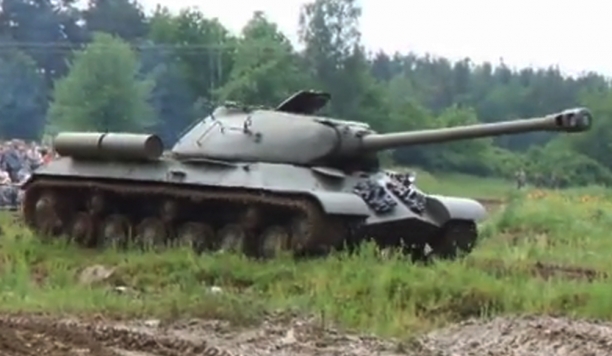
The IS-3 or the Iosef Stalin (Joseph Stalin) IS3 was part of a series of tanks that served Soviet Army during the WWII. The whole series was based upon the KV tanks and began with the IS-1 that was produced in the year 1943. The IS-2 came next during the very same year. The IS-2 came fitted with the 122, main gun - a lethal weapon indeed. The IS-3 was developed afterwards because the Soviets were convinced of its value.
The IS-3 modifications were a re-design of the whole series. For instance, the armor protection of the IS-3 is the best of the lot. This tank has better turret armor protection than its predecessors and is thus a safer machine to operate overall. The armor of the whole series was already a stand out. There were other modifications made on the turret. It was well-rounded and there was more space for the turret crew. Additional projectiles were also given ample space. For better protection from ballistics, the glacis plate had increased slope. The combined modifications on the turret and hull resulted in a lowered silhouette. This made the tank more difficult to track and target from any given angle.
The chief armament of the IS-3 was the 122mm (121.9mm). This was infamous during the war for its excellent penetration capacity and the flexibility that came with it. Expert crew can let off from 2-3 rounds every minute. The projectile choices were expanded as well to include 10 AP or armor-piercing rounds. In addition, there were 18 HE or high-explosive fragmentation. The IS-3 was capable of facilitating battlefield targets.
In October, 1944 the IS-3 prototype was designated as "Object 703." After a very short while and a series of evaluations this was approved for production. Factories in the Soviet Union capable of constructing heavy vehicles were soon busy with construction. The very first operational IS-3 tanks were entered into the inventory of the Soviet Red Army on May, 1945. The IS-3 appeared in the victory parade through the city of Berlin on 7th of September, however, it did not see much action at the front because the war in Europe was mostly over. Adolf Hitler had taken his life and the German capital has fallen under the control of the Soviet Army. Only a few pockets of the German war machine were still continuing the fight, so not much left to deal with.
But it was different in the Pacific because the Soviets were still fighting against Japan. It was said that an IS-3 regiment was deployed in August 1945 in the Far East (mission unknown). By the end of that month the Japanese empire would surrender signaling the end of the war in the Pacific and WWII.
At the time that the Second World War ended, the IS-3 was the most advanced war vehicle of its kind. The Soviets continued producing the IS-3 until mid-1946. About 2,311 units were completed. All the IS-3s in existence were inventoried by the Red Army. The tanks were in the Soviet stockades (it's allies as well) during the years of the Cold War. Even the Western powers had their eye on the IS-3 especially because this tank was a key influence in Soviet tank design in the twenty years that followed.
The IS-3 has a distinctively stout, low-set profile with a curved turret. Somehow its appearance recalls that of an upside-down frying pan. The rifled barrel is long with muzzle break that is double-baffled. The side track on either side has 6 road wheels. The drive sprocket is aft with 3 track return rollers and the idler is held in forward position. The rear compartment is where the V2-IS engine is located while the turret is forward. The heavy chassis was powered by the 520 horsepower engine capable of a top speed of 25 mph. Its range is 115 miles. The IS-3 weighs about 45.77 tons, was 32 feet, 4 inches long and eight feet high. It can be operated by four personnel.
The entire tank body was protected by 20mm - 230mm thick armor which would make it nine inches at the thickest areas. Aside from the armor, the IS-3 was equipped with the D-25T series main gun (121.9mm) and was formidable indeed. Enemy forces loathed attacking it from the front. Its primary weapons were 28 rounds of projectiles (122mm). The secondary armament was a 12.7mm anti-aircraft machine gun which carried 250 rounds. The IS-3 also had one to two 7.62mm anti-infantry machine guns which carried 756 rounds.
The IS-3's design was a step forward in a number of areas. However, it was still beset with mechanical problems much like other heavy tanks of that size. With regard to its operational abilities, the power pack was very unreliable. The transmission systems and engine were both prone to failure. These defects as well as a few matters concerning the hull were possibly due to the speed by which the Soviets pushed for its design & production. It is therefore not surprising that quality control problems would arise. Because of these limitations, a set of upgrades were done, intended to improve certain areas. Some of the improvements made were on the clutch mechanism, road wheels, and new radio equipment. The improvements added to the total weight of the tank by four tons and this additional burden hampered the IS-3's performance a bit.
The Red Army made good use of the IS-3 from the late 1940s until well into the '50s. During the Cold war, the tank underwent a modernization scheme that helped maintain its relevance. After all, its initial design was meant for the World War 2 stage and the Cold War was very different. A number of modern thoroughbreds eventually succeeded the IS-3 and this formidable war machine was soon retired to the history books. Nevertheless, before her time was ended, the IS-3 served a few foreign armies. Egypt was known to favor the IS-3 and even showcased the tank on parades as seen in 1956. The Israeli military captured a few units and these were reconstituted for use of the IDF. The IDF retrofitted the IS-3 with engines from the T54 tanks. The modification improved the performance level for the IDF and gave it a more modern feel. After China's part in the Korean War, this Communist nation also received IS-3 deliveries. The IS-3 was also used as a trainer for new Soviet tanker models before it was taken to storage. The Soviets maintained the IS-3's designation as the most dominant tank in the whole world. Few war vehicles could dispute this distinction.
|

The Leopard 2 is a tank which was developed for the German Army in the early '70s by Krauss-Maffei. It was the successor of the Leopard 1 and soon became the German Army's chief battle tank. The Leopard 2 was first put into service in the year 1979. Aside from Germany this tank came into service in 12 countries in Europe and even some non-European nations sought after it, so there is no wonder around 3,480 Leopard 2 tanks were manufactured in total. In the battlefield, the Leopard 2 made its debut when the German Army brought it to the battlefields of Kosovo. The contingents from Canada and Denmark brought their own Leopard 2s in Afghanistan as part of the International Security Assistance Force.
This tank saw two batches of development. The original models (until Leopard 2A4) had a turret armor that was vertically oriented. The improved models or the Leopard 2A5 on the other hand (along with the versions that followed) boasted of a turret appliqué armor that was angled and arrow shaped. Other improvements were made to the newer batches as well. All of these tank versions were equipped with laser range-finders, digital fire control systems, advanced night vision equipment, thermal imaging (later on) as well as coaxial machine gun & fully stabilized main gun. The upgraded sighting equipment is worth mentioning since it made the tank the very first vehicle to utilize an LLLTV or low-light level TV system. This tank was designed to engage any moving target while in motion over rough terrain.
|
In late 2008, a couple of rusting remains of WWII tanks were found about 10 miles off the coast in West Sussex. Experts identified them as the premiere Centaur CS IV, based mainly on the artillery. This was the only known Centaur model to witness the fighting in war. It was fitted with 51 rounds of ammo (95mm howitzer). These amphibians had waterproof engine inlets and wading gear for helping them ashore and waterproof covers were fitted to their fighting machine's guns. The tanks were proudly used by the Royal Marines.
According to historians the tanks found were two of 80 tanks that were headed out on D-Day to the beaches of France. How the rusting pair sank is still unknown though. A total of 114 Centaur CS IV tanks were ever made and the current number of surviving units is only four.
|
Did you know that during the 1930s Vladimir Levkov had designed and built a number of hovercrafts. His design attempts where trying to make vortex engines and mate them with tanks to render them amphibious. Though the results were rumored to have never even progressed beyond mock up stages, photos in this article prove that to be different. The history behind these types of crafts has been almost forgotten by many since WWII. The fact is that the Soviet Union had an experimental military armored cavalry which in today's world has become the hover tank.
There are notable differences between and amphibious hovertank and hovercraft. One treads across dry land to move at a rapid rate of speed and the other with a vortex engine can make it float across bogs or slow moving bodies of water. Ultimately this proves that Levkov's designs held a lot of valuable technology.
|
This is a mad shooter game. Hope your aim is up to par and you are quick otherwise you'll be left for dead. Like with the spaceship in Arkanoid, the objective is to shoot all the incoming enemy tanks and armored vehicles to protect your layer. Keep your friends close and enemies closer.
Controls:
Mouse - aim and shoot
WSAD or ARROWS - move
Q - adjust quality
Have Fun!
|
Have you heard of the infra-red invisibility disguise for tanks? BAE systems created a procedure to conceal their heat signature from thermal imaging technology.
What do you think?
|
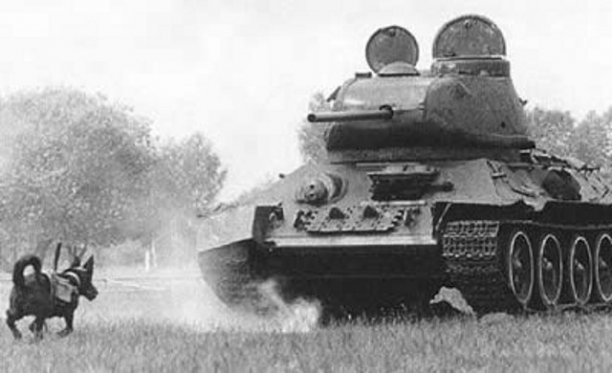
Bomb dogs, anti-tank dogs used by the Russian Red Army were true victims because of desperation. The Russians were overwhelmed by the Eastern Front from the German Wehrmacht so they had trained dogs to carry bombs to specific targets. Once they released the device from their teeth the dogs should have gone back to their operator. This was nearly impossible to get them to do this and in the end they just blew up the dog when they reached their target.
The average bomb the dogs carried were 26 pounds that was strapped onto them. They were kept deliberately hungry all the time. This made the dogs run to targets thinking they would be fed, totally unaware of their deadly fate. When the dog dived under a tank a lever that was attached to their rig would cause the bomb to detonate on contact. Because it was so effective, Germans began to shoot all dogs on sight out of paranoia. Thought undocumented, there were an estimated 300 German tanks destroyed and over 40,000 dogs used by the Soviets for different Army tasks.
|
Go on exploring the hidden territory behind the enemy lines. Destroy everything around you just to be sure. Be careful, the game can turn on you very fast :).
Enjoy!
|
What a classic game. Your objective is to destroy the enemy tank with your cannon. You can maneuver your tank back and forth on the destructible terrain to evade your enemy's aim.
Use arrows up and down to move your turret and space bar to shoot.
Good Luck Soldier!
|
When taking a look at all the tanks that were produced during the second World War, putting together a list of the top ten is not easy. That being said, underneath is a list of the top ten that you should take a look at. These beasts were crucial for both sides during the War.
|
|
|

